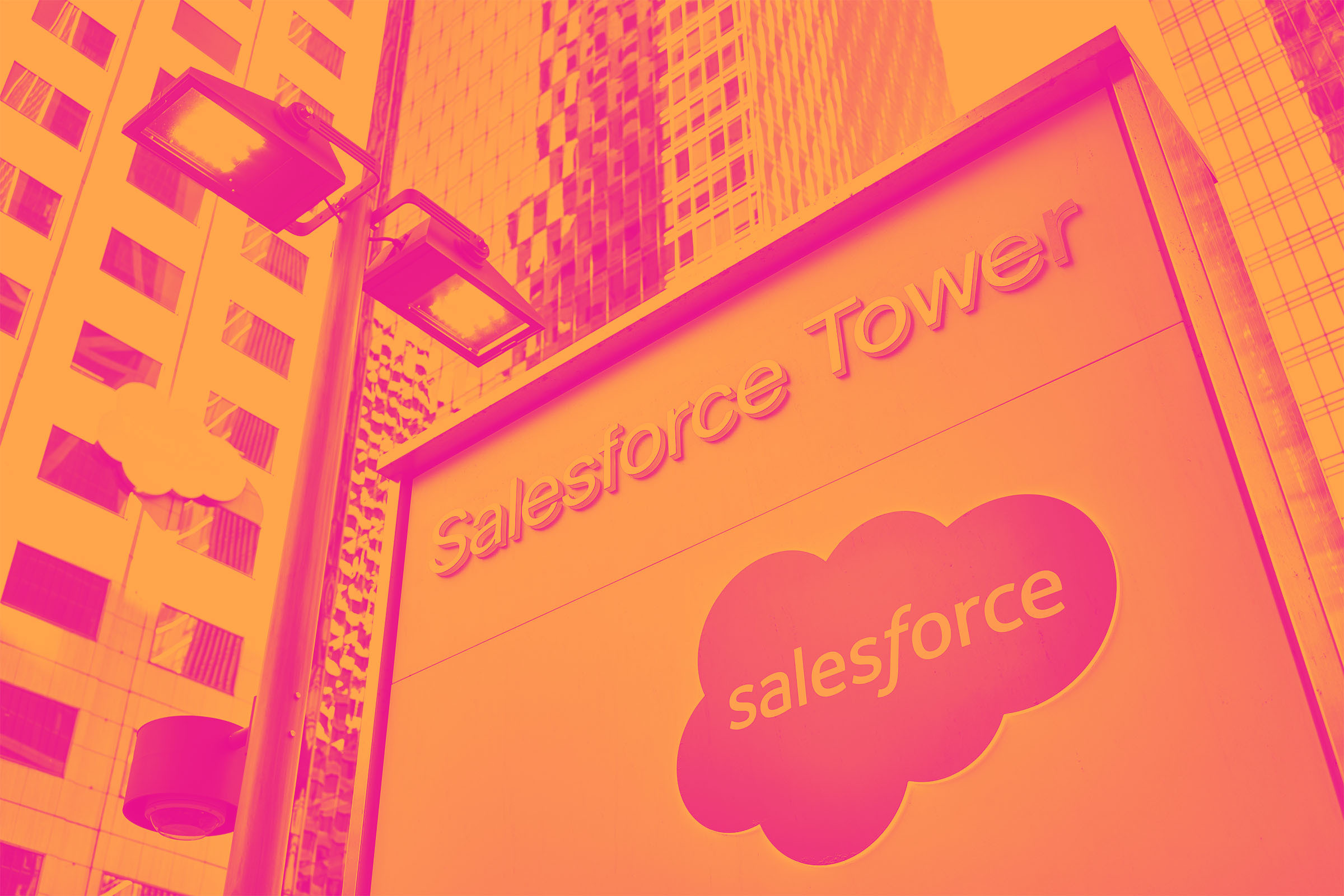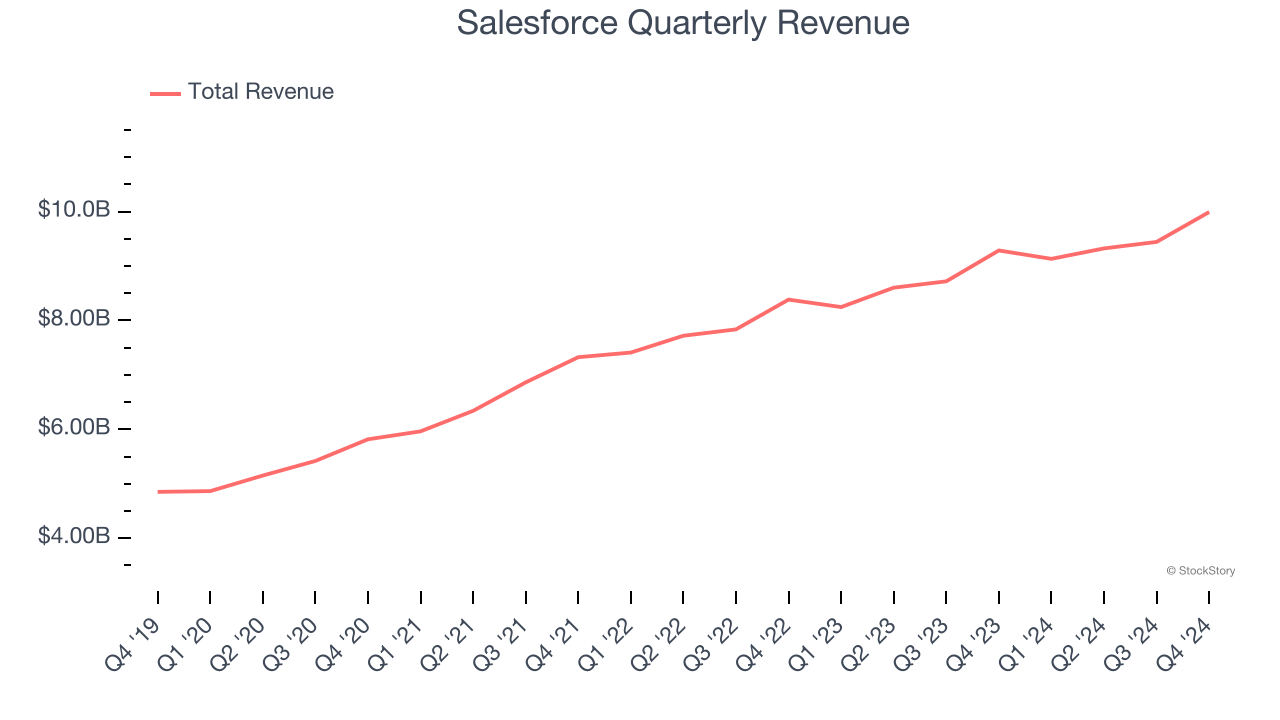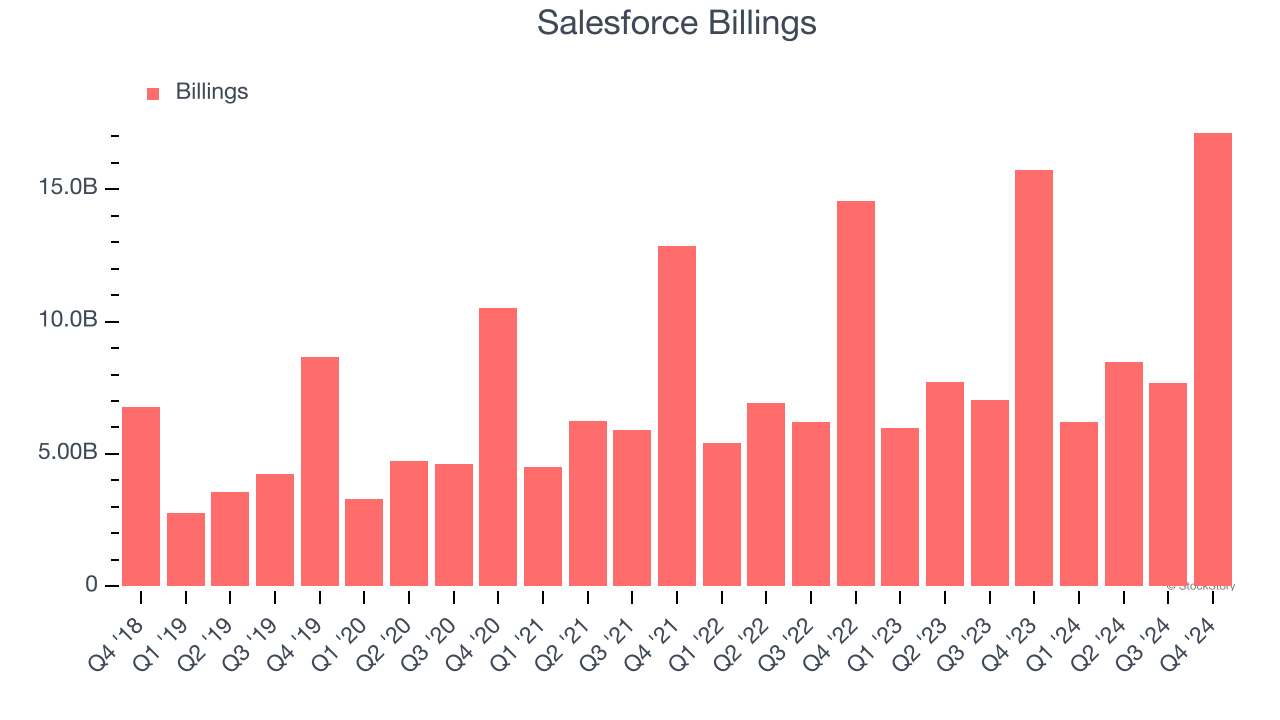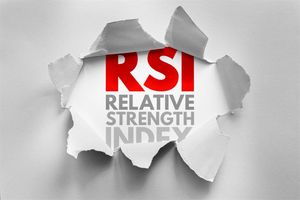
Customer relationship management software maker Salesforce (NYSE: CRM) missed Wall Street’s revenue expectations in Q4 CY2024, but sales rose 7.6% year on year to $9.99 billion. Next quarter’s revenue guidance of $9.74 billion underwhelmed, coming in 1.7% below analysts’ estimates. Its non-GAAP profit of $2.78 per share was 6.4% above analysts’ consensus estimates.
Is now the time to buy Salesforce? Find out by accessing our full research report, it’s free.
Salesforce (CRM) Q4 CY2024 Highlights:
- Revenue: $9.99 billion vs analyst estimates of $10.04 billion (7.6% year-on-year growth, 0.5% miss)
- Adjusted EPS: $2.78 vs analyst estimates of $2.61 (6.4% beat)
- Adjusted Operating Income: $3.30 billion vs analyst estimates of $3.29 billion (33.1% margin, in line)
- Management’s revenue guidance for the upcoming financial year 2026 is $40.7 billion at the midpoint, missing analyst estimates by 1.6% and implying 7.4% growth (vs 8.8% in FY2025)
- Adjusted EPS guidance for the upcoming financial year 2026 is $11.13 at the midpoint, missing analyst estimates by 0.7%
- Operating Margin: 18.2%, in line with the same quarter last year
- Free Cash Flow Margin: 38.2%, up from 18.8% in the previous quarter
- Billings: $17.13 billion at quarter end, up 8.9% year on year
- Market Capitalization: $292.7 billion
“We had an incredible quarter and year, with strong performance across all our key metrics, including the highest cash flow in our company’s history and more than $60 billion in RPO,” said Marc Benioff, Chair and CEO, Salesforce.
Company Overview
Launched in 1999 from a rented one-bedroom apartment in San Francisco by Marc Benioff and his three co-founders, Salesforce (NYSE: CRM) is a software-as-a-service platform that helps companies access, manage, and share sales information such as leads.
Sales Software
Companies need to be able to interact with and sell to their customers as efficiently as possible. This reality coupled with the ongoing migration of enterprises to the cloud drives demand for cloud-based customer relationship management (CRM) software that integrates data analytics with sales and marketing functions.
Sales Growth
A company’s long-term sales performance is one signal of its overall quality. Even a bad business can shine for one or two quarters, but a top-tier one grows for years. Over the last three years, Salesforce grew its sales at a 12.7% compounded annual growth rate. Although this growth is acceptable on an absolute basis, it fell short of our standards for the software sector, which enjoys a number of secular tailwinds.

This quarter, Salesforce’s revenue grew by 7.6% year on year to $9.99 billion, missing Wall Street’s estimates. Company management is currently guiding for a 6.6% year-on-year increase in sales next quarter.
Looking further ahead, sell-side analysts expect revenue to grow 9% over the next 12 months, a deceleration versus the last three years. This projection is underwhelming and implies its products and services will face some demand challenges.
Today’s young investors won’t have read the timeless lessons in Gorilla Game: Picking Winners In High Technology because it was written more than 20 years ago when Microsoft and Apple were first establishing their supremacy. But if we apply the same principles, then enterprise software stocks leveraging their own generative AI capabilities may well be the Gorillas of the future. So, in that spirit, we are excited to present our Special Free Report on a profitable, fast-growing enterprise software stock that is already riding the automation wave and looking to catch the generative AI next.
Billings
Billings is a non-GAAP metric that is often called “cash revenue” because it shows how much money the company has collected from customers in a certain period. This is different from revenue, which must be recognized in pieces over the length of a contract.
Salesforce’s billings came in at $17.13 billion in Q4, and over the last four quarters, its growth was underwhelming as it averaged 7.8% year-on-year increases. This performance mirrored its total sales and suggests that increasing competition is causing challenges in acquiring/retaining customers. 
Customer Acquisition Efficiency
The customer acquisition cost (CAC) payback period measures the months a company needs to recoup the money spent on acquiring a new customer. This metric helps assess how quickly a business can break even on its sales and marketing investments.
Salesforce is very efficient at acquiring new customers, and its CAC payback period checked in at 26.5 months this quarter. The company’s rapid recovery of its customer acquisition costs means it can attempt to spur growth by increasing its sales and marketing investments.
Key Takeaways from Salesforce’s Q4 Results
It was good to see Salesforce beat analysts' EPS expectations this quarter. On the other hand, its full-year revenue and EPS guidance missed, making this a softer quarter. The stock traded down 4% to $295 immediately after reporting.
Salesforce’s earnings report left more to be desired. Let’s look forward to see if this quarter has created an opportunity to buy the stock. If you’re making that decision, you should consider the bigger picture of valuation, business qualities, as well as the latest earnings. We cover that in our actionable full research report which you can read here, it’s free.




